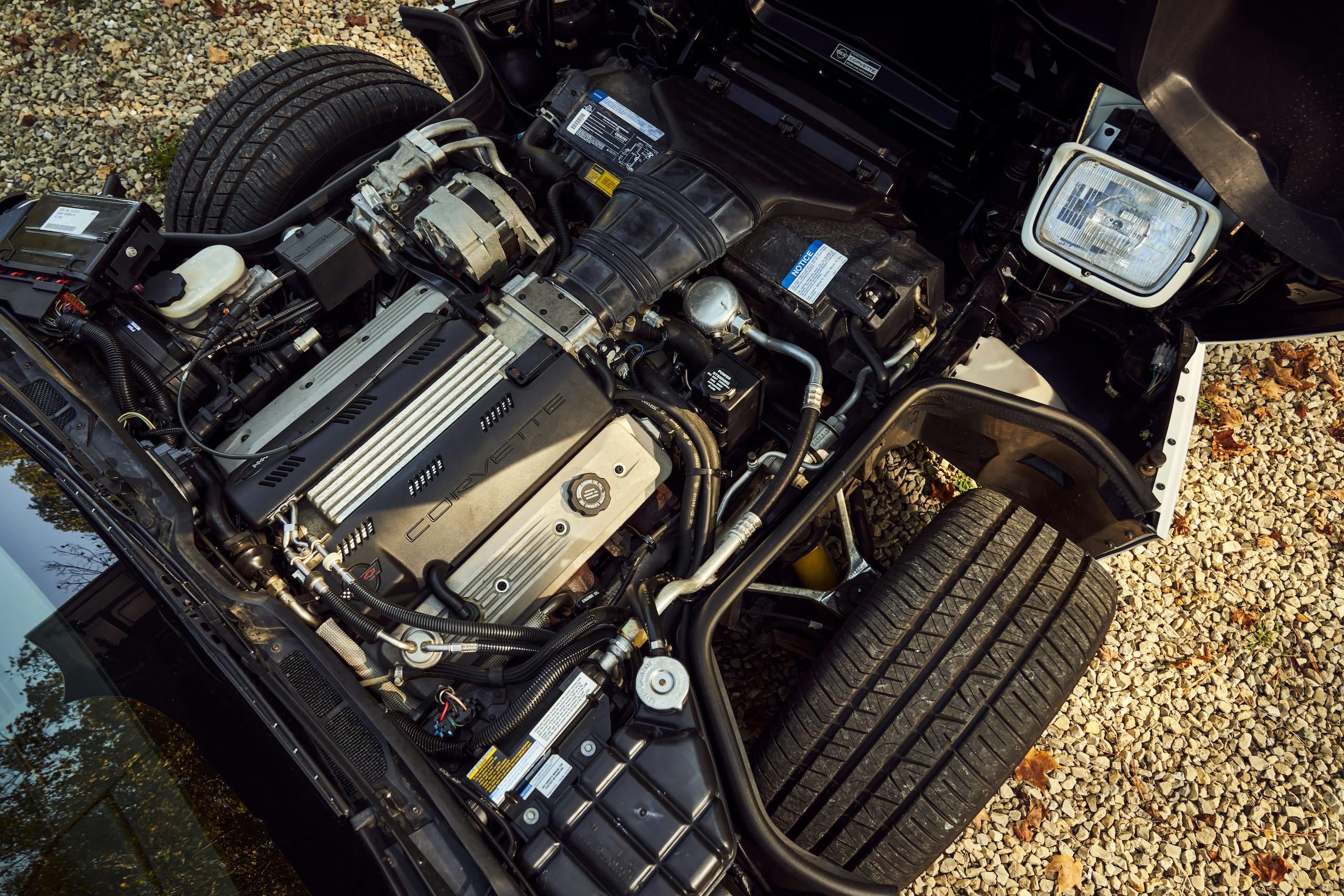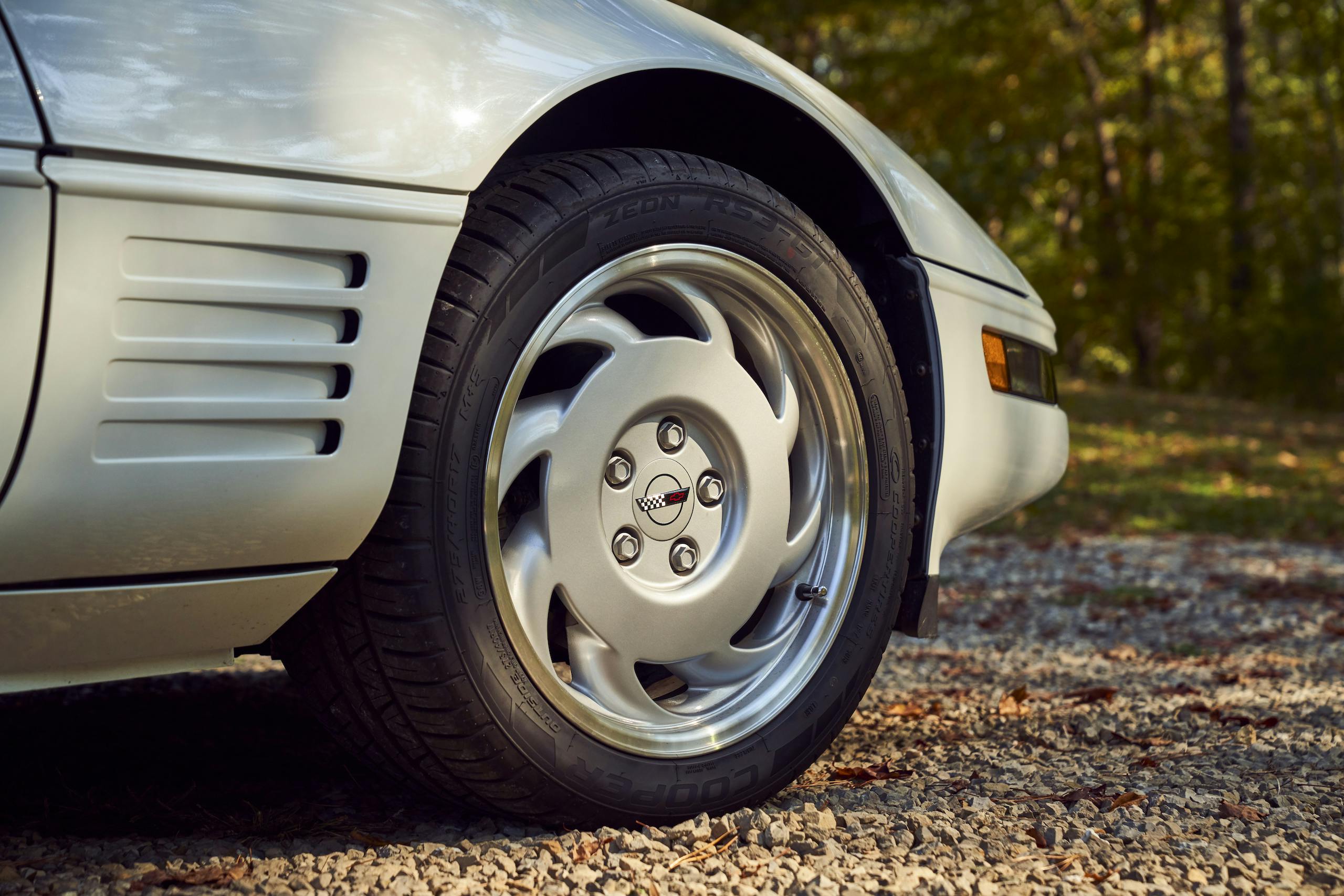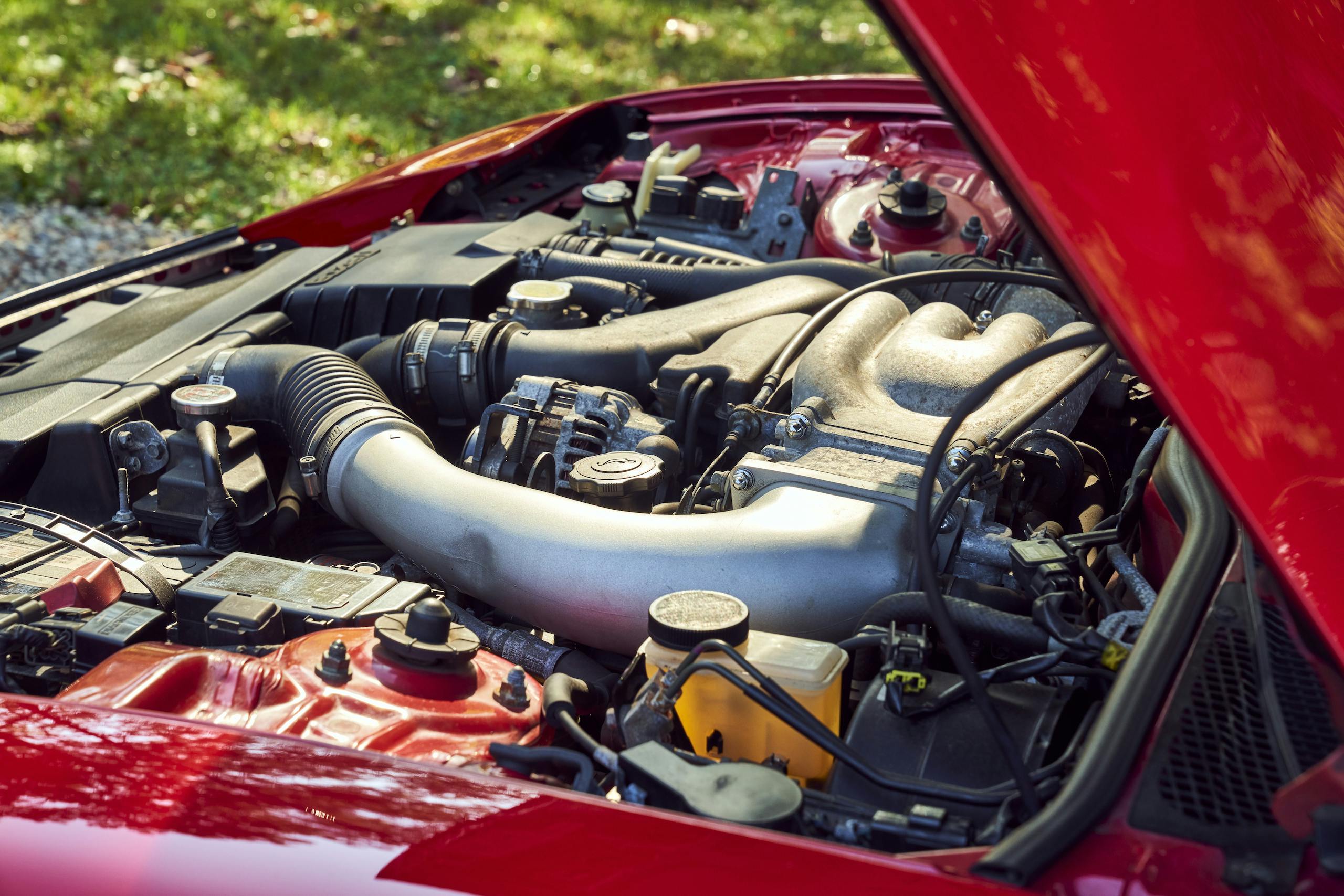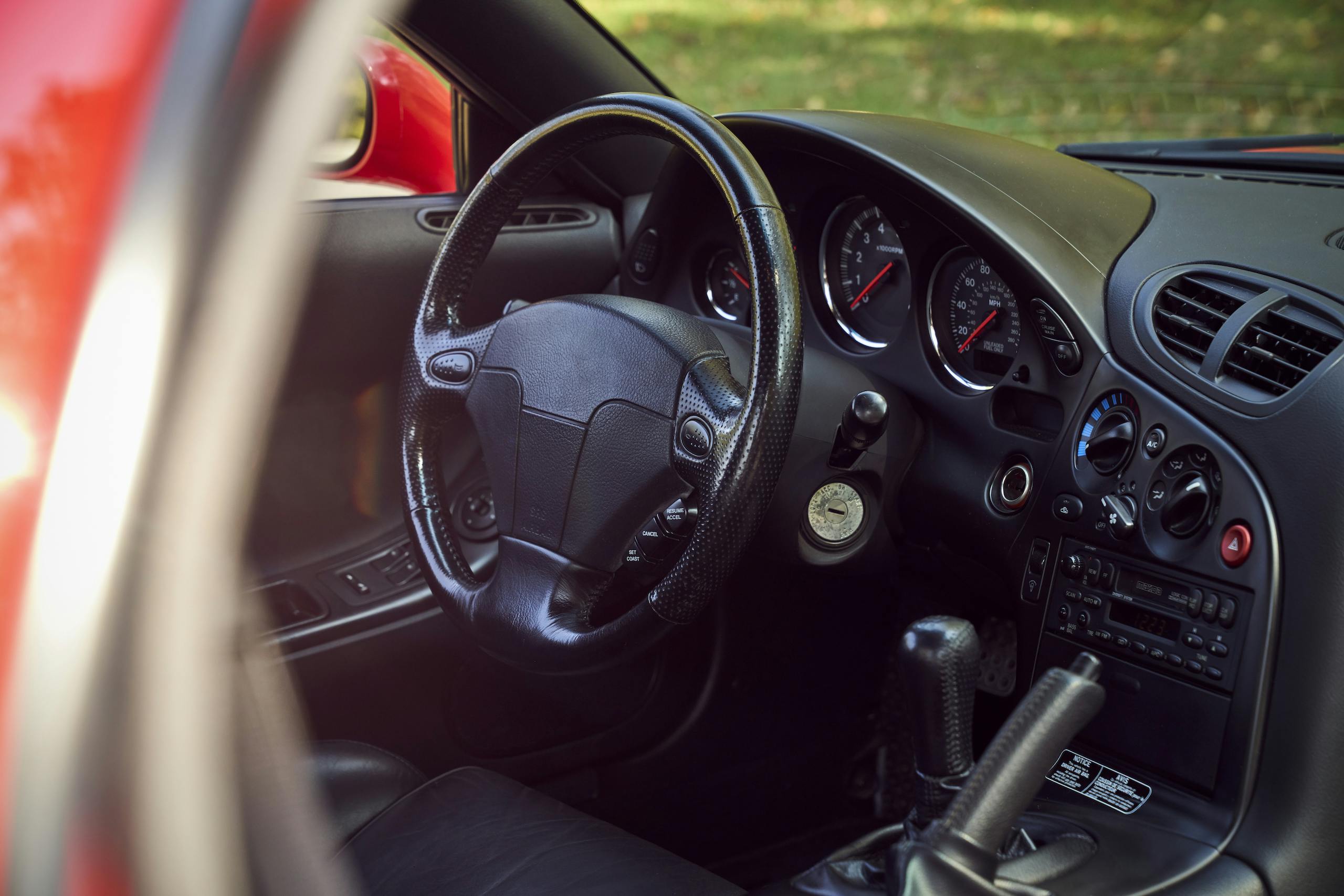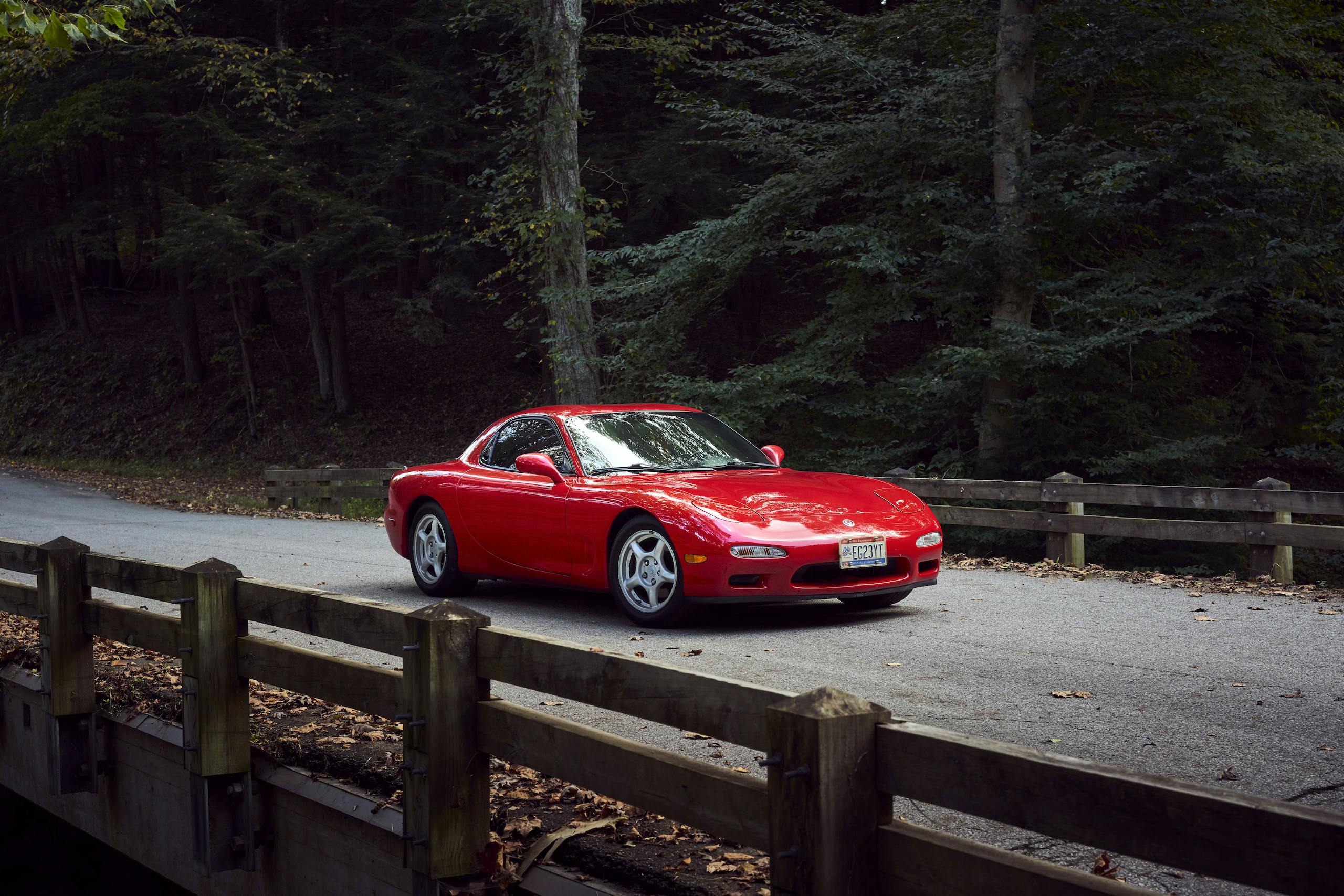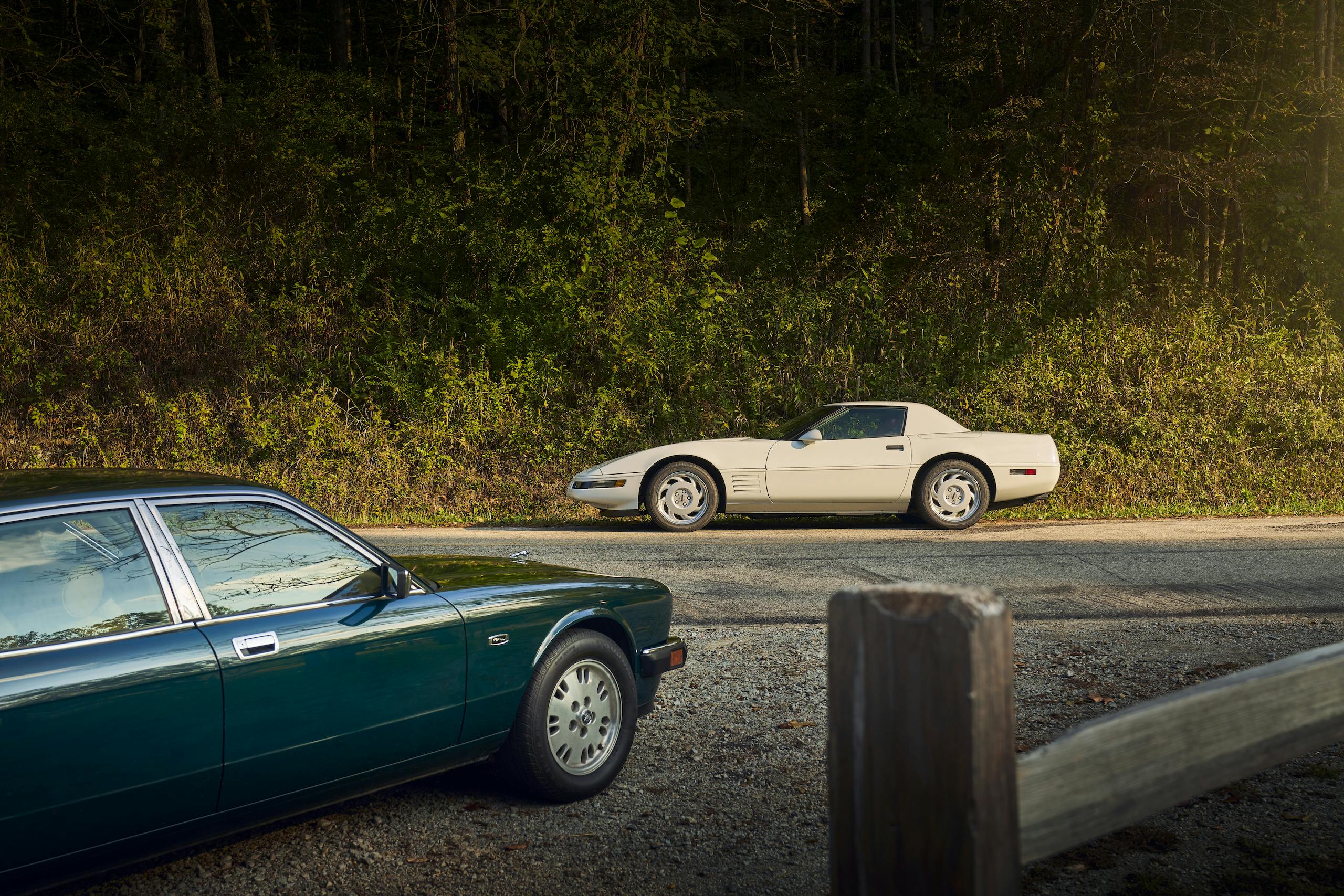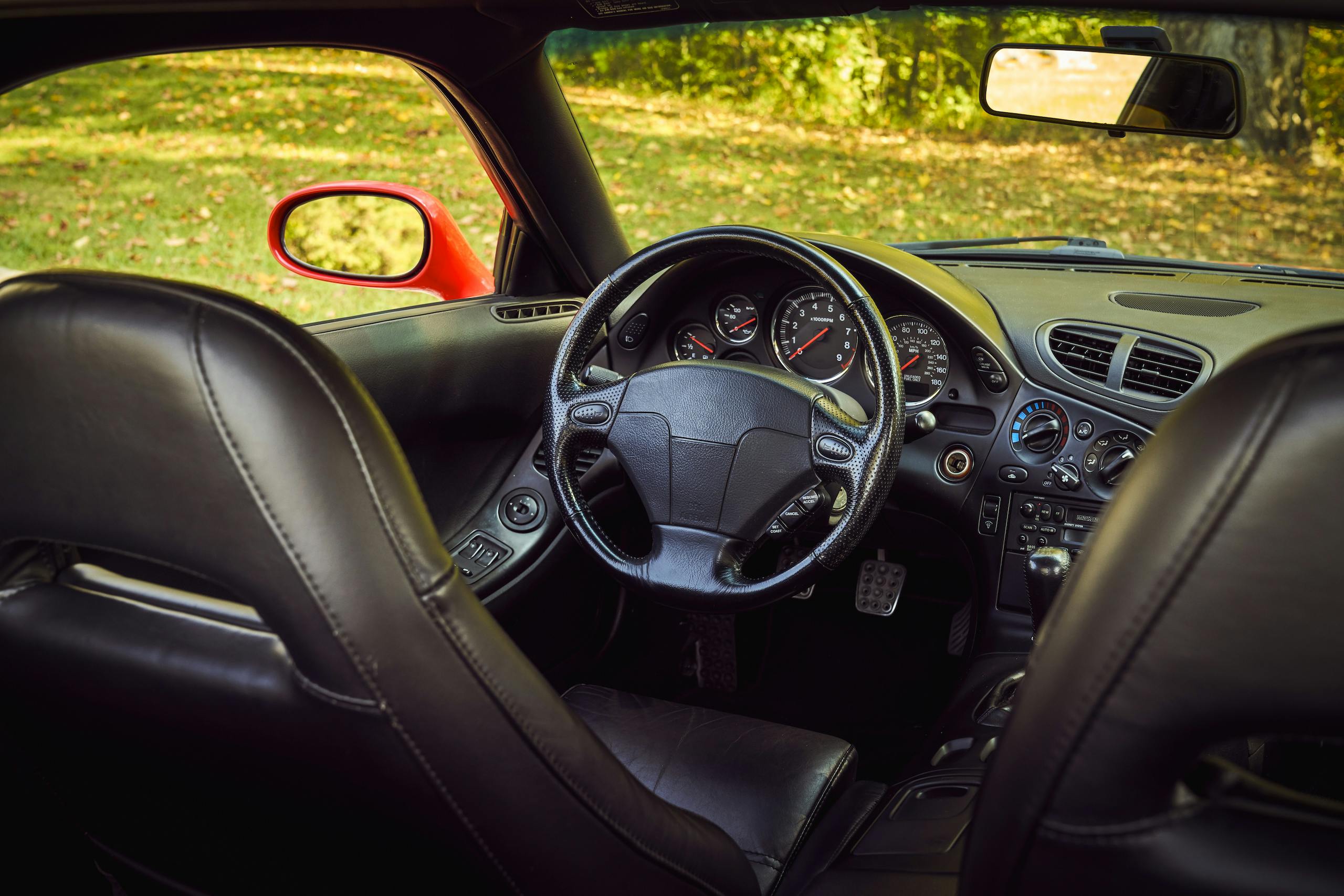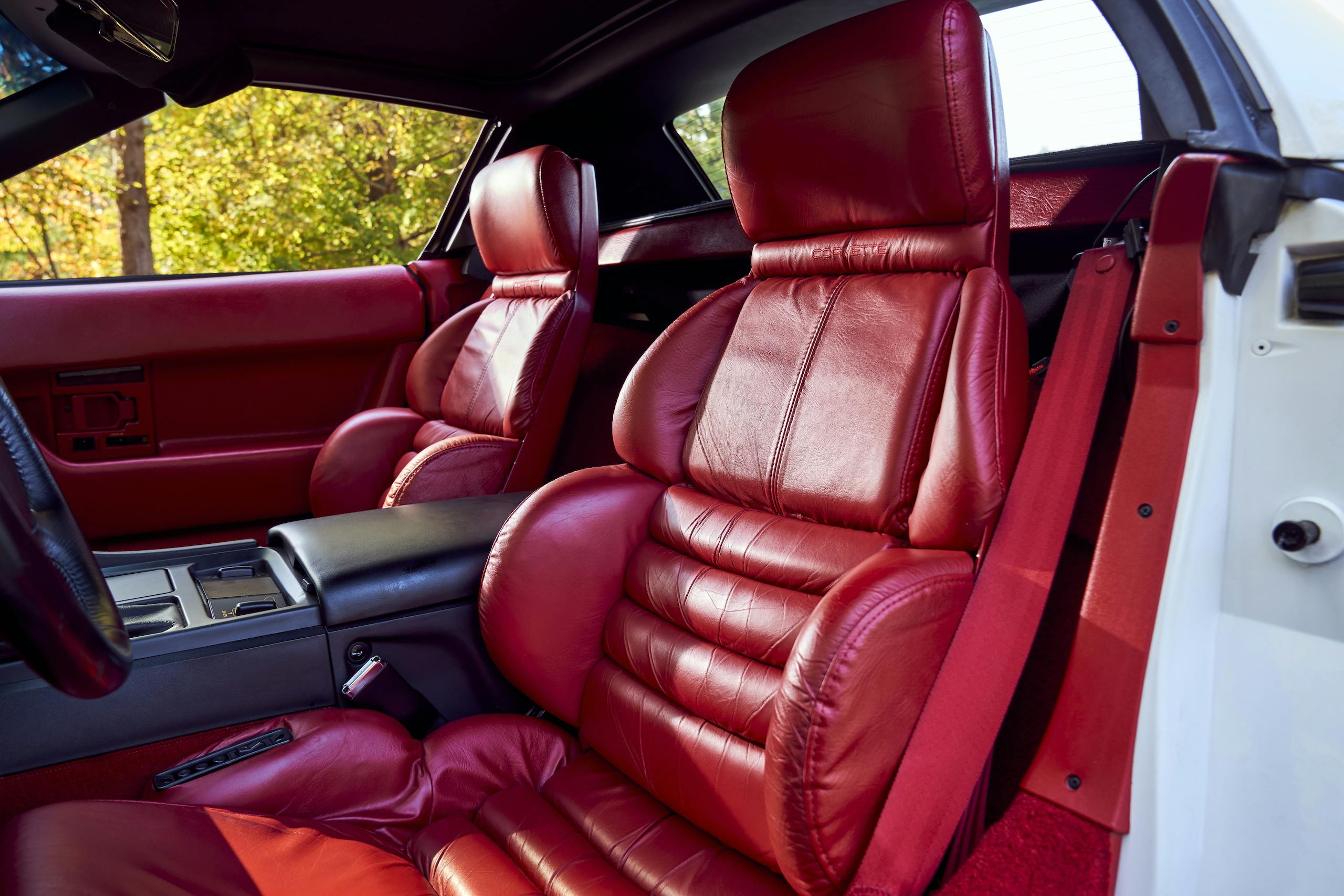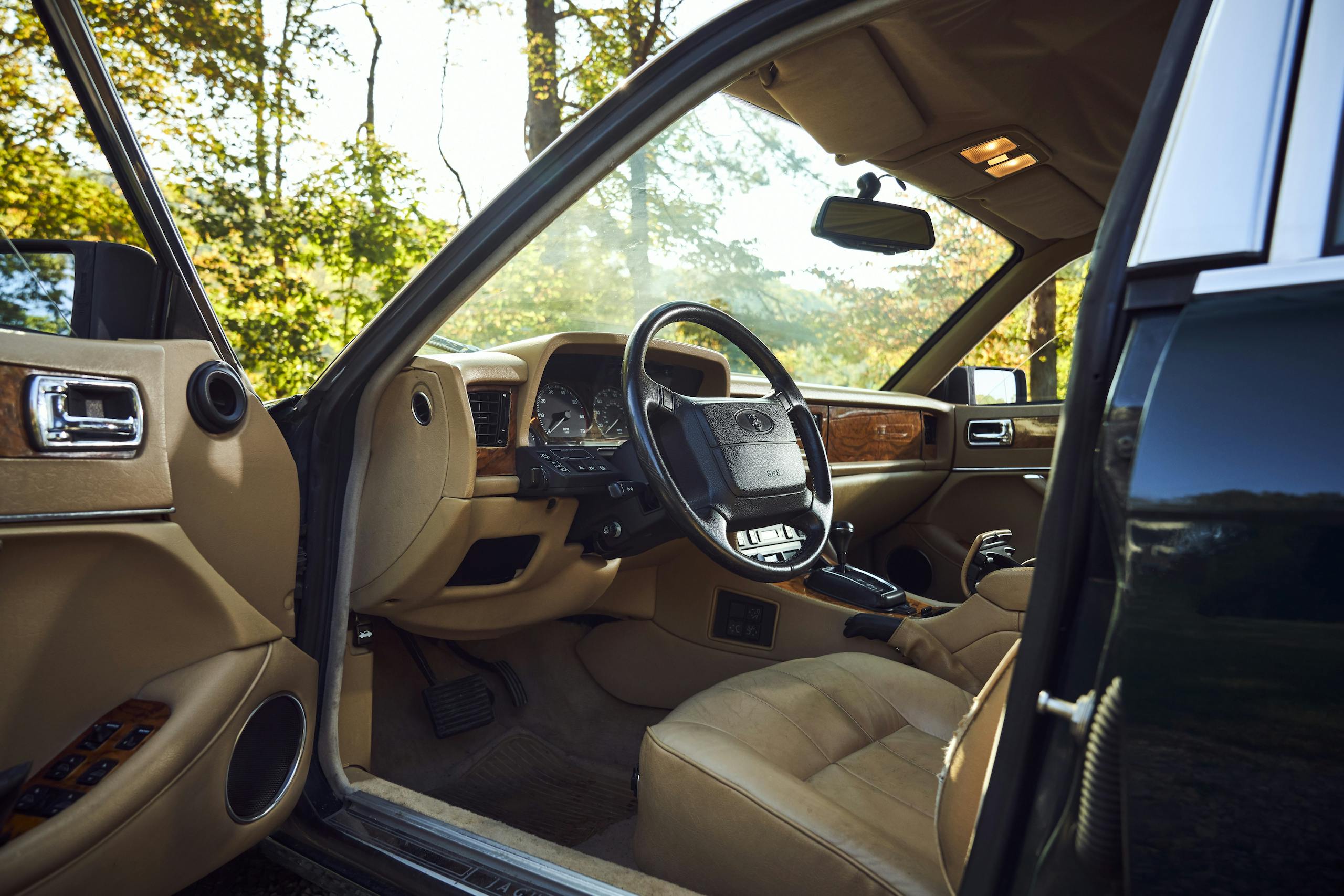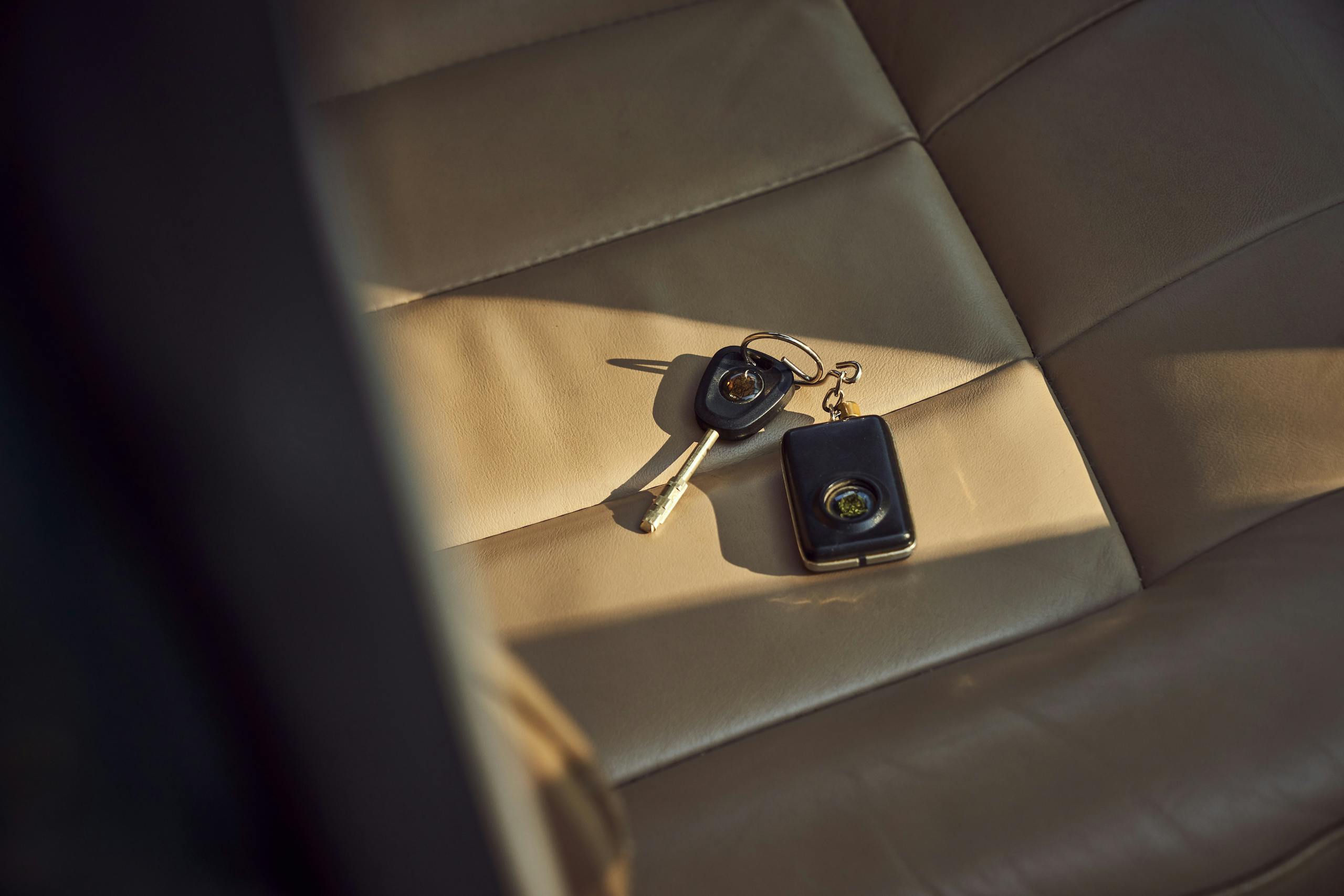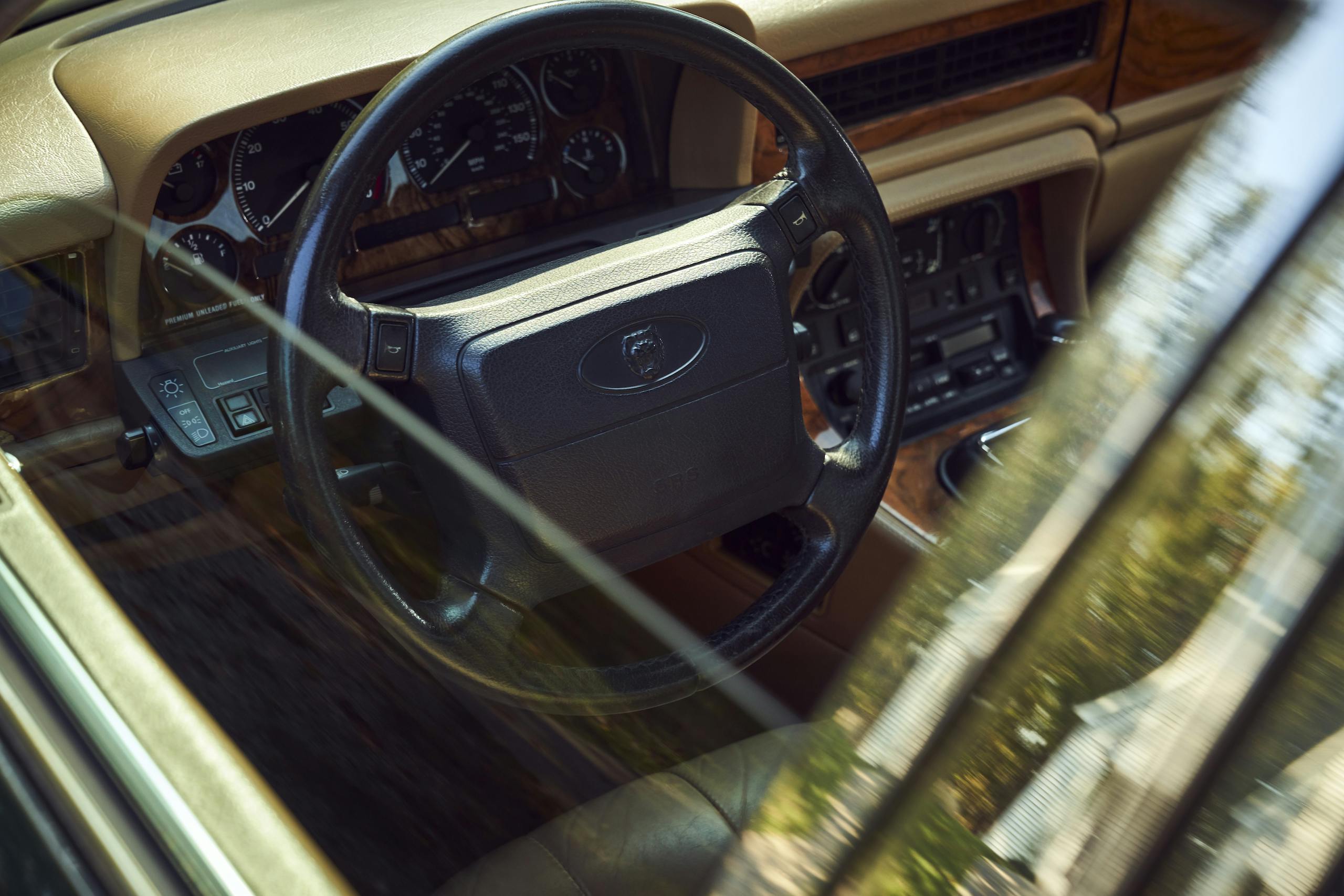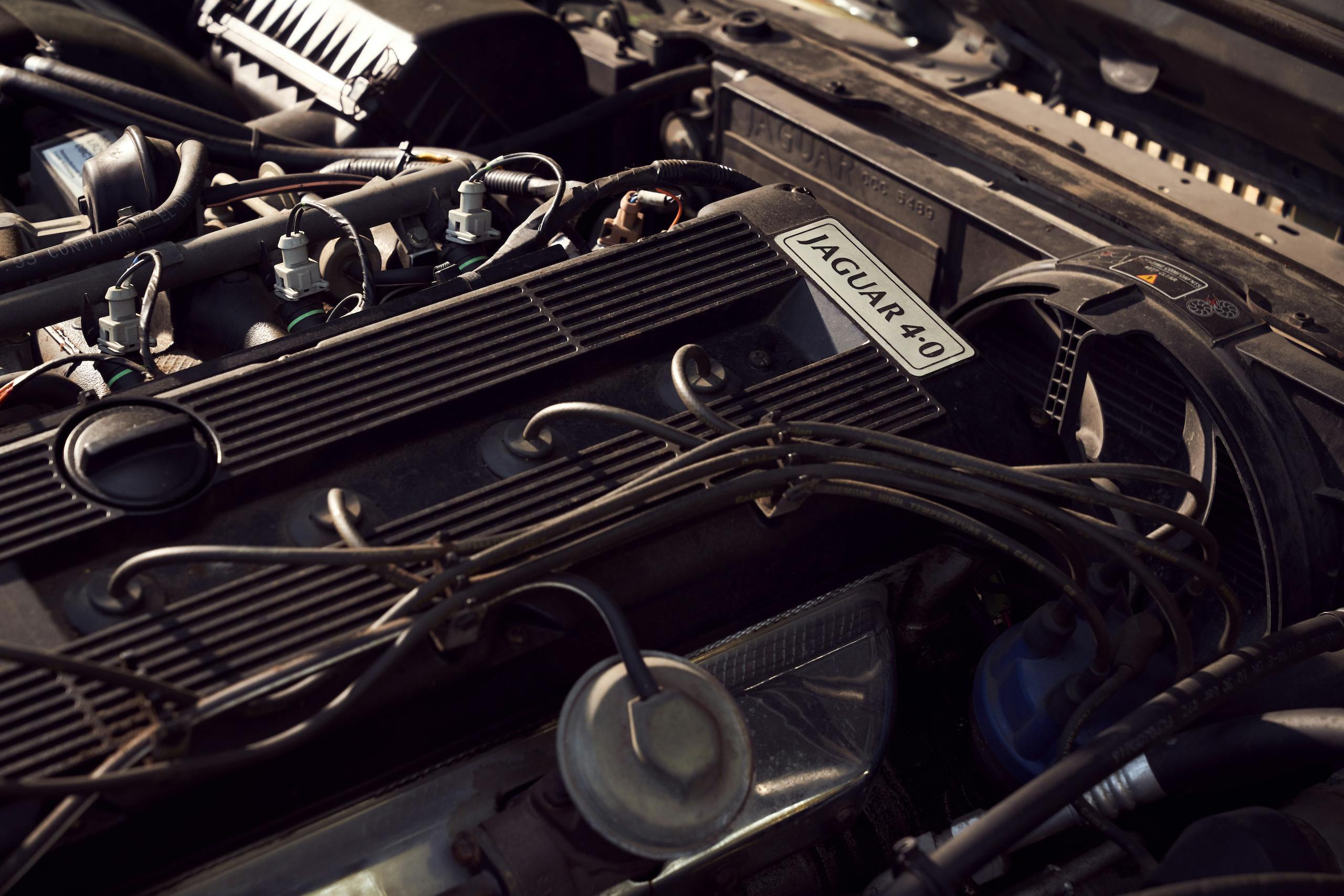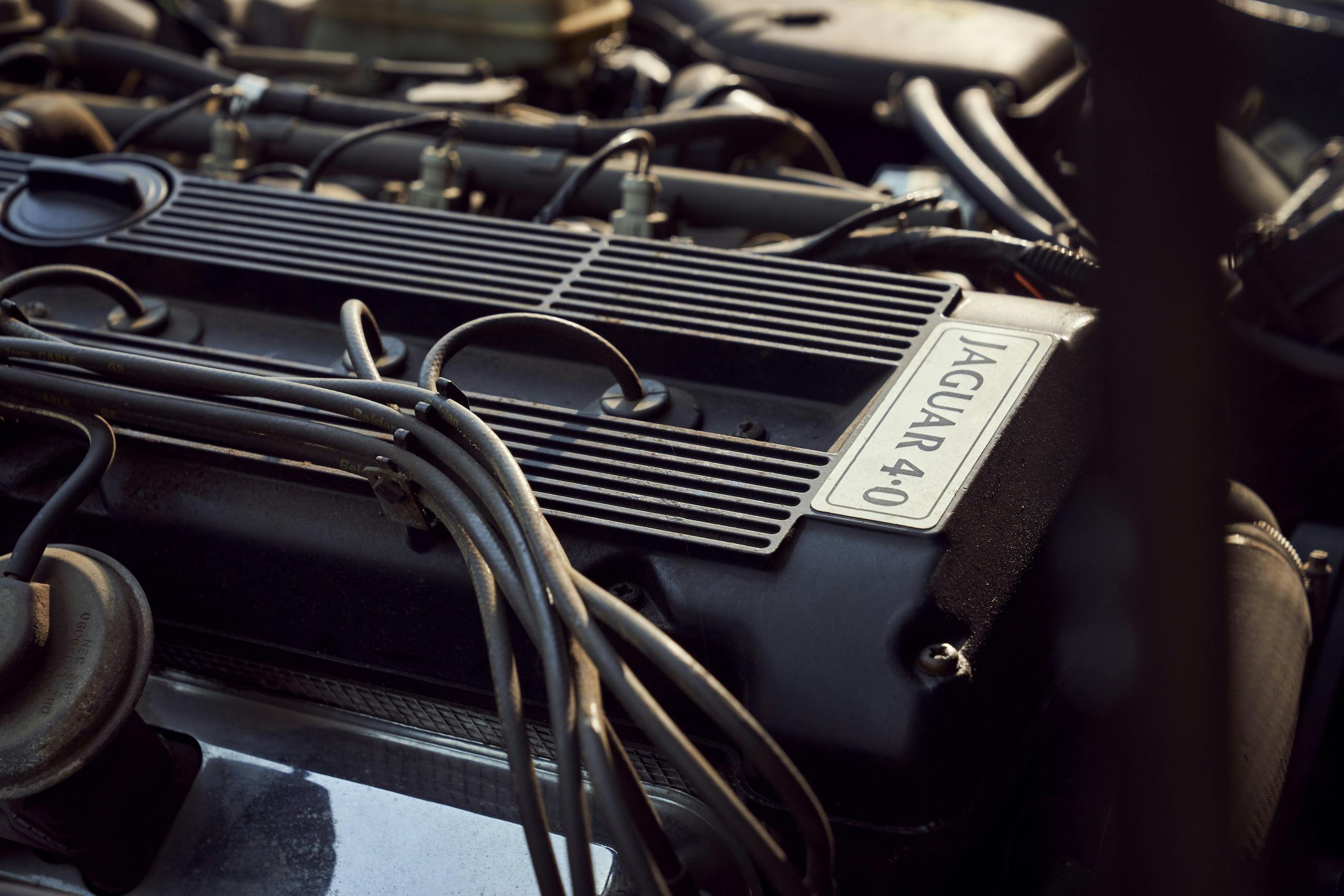Class of 1994: The best cars of the early ’90s marked a sweet spot between carburetors and CarPlay
It seems like yesterday, the man sang, but it was long ago. Just 15 million people on the internet, world-wide. No Facebook, no Amazon, and definitely no Google.
At the time, a total of 42 percent of Americans believed they knew how to operate a computer, largely unaware that the microprocessor’s long-established beachhead on the four-wheeled front had expanded in the previous few years. Ford’s EEC-V engine controller, introduced in 1994 in preparation for the OBD-II federal diagnostic standard, had 1 full megabyte of memory onboard and galloped along at 18 megahertz. When automakers got a taste of what the onboard computer could do for everything from cold starts to V-8 fuel mileage, they were hooked for good. Many of today’s automobiles can’t open their doors without the benevolent permission of a silicon chip.
Technology is still servant, rather than master, in this mid-1990s showroom quartet. Three of them—the facelifted Corvette, the much-refined Jaguar, the Volkswagen with a heart transplant—are just improved versions of automobiles from a previous decade. The RX-7 affects deliberate simplicity in everything from its styling to its instrument panel. CarPlay? What’s that?
Twenty-six years later, the best of 1994’s cars offer unique opportunities to automotive enthusiasts, particularly those on a budget. They’re felicitous fusions of reliability and excitement, possessed of traditional character and computerized troubleshooting. Perfectly positioned between the vacuum-line emissions nightmares of 1984 and the generic flush-faced aero-clones of 2004.
To shine a light on the great choices available from this year, we assembled an international quartet in Ohio’s Hocking Hills for a long-overdue class reunion. No cap or gown necessary.

Our choice of location is far from random. Throughout the ’90s, the unpredictable and often treacherous roads in this lightly populated section of southeast Ohio played host to countless comparison tests and individual evaluations for the “buff books” of the time. No single racetrack, not even the fabled Nürburgring, offers the kind of variety or elevation changes found in State Route 374—and that’s in the first 20 or so miles of most trips through the area. In the world of automotive enthusiasm prior to the internet, the verdicts rendered by the car magazines carried no small amount of weight with buyers. Many a page was turned purple with heavy-breathing descriptions of high-speed heroics at the limit of man and machine. Needless to say, the enthusiasm of the writers sometimes exceeded their capabilities; quite a few press cars exited the Hocking Hills on a flatbed over the years. Our test vehicles are all owned by Hagerty members, so we’ll be proceeding at a more relaxed pace.
As the quarter-century-old quartet assembles in an abandoned church parking lot near the Conkles Hollow State Nature Preserve, it’s the Mazda RX-7 owned by Doug Yost that draws the most attention. Nearly new at the time, Yoichi Sato’s design owed nothing but hidden headlights to its pair of predecessors. The RX-7 before it, code-named the FC, had been designed to serve in a multiplicity of roles, from hardcore turbocharged coupe to grand-touring 2+2 (in some markets) to 3400-pound luxury convertible. Its looks, best described as “Porsche 928 meets Porsche 944,” had been considered pleasant but noncontroversial almost to the point of controversy. Forgettable, if you will.
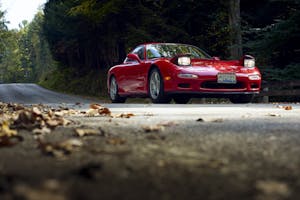
This later RX-7, the FD, is anything but forgettable. Like the Jaguar XKE with which it was so often compared on its debut, the FD works on surface tension. The curves are stretched taut across a minimal skeleton and taper to a sculpted tail section to cheat the air as much as possible. By today’s standards, it’s small in all dimensions. Light, too; every production variant scaled under 3000 pounds. In Japan, these cars were often subjected to the gross indignity of extensive aerodynamic kits, even from the factory, but our example is free of any such addition.
The white Corvette convertible next to it can’t match the RX-7 for visual impact—and to be fair, it wasn’t meant to. After 11 years of production, the fourth-generation Chevrolet sports car had acquired a sort of ubiquity that it retains to this day. The mild updates to the front and rear fascias can’t hide the fact that the C4 had been in production for half a decade before Sato even started sketching the FD RX-7. The Corvette team knew the car was old. They’d hoped to have the C5 out for ’94 or ’95, but instead, they were forced to endure an enervating series of program halts as GM wrestled with the idea that perhaps there was no reason to stay in this market segment.
Which is not to say that the market was tired of the C4, because it was not. A successful 1992 heart transplant in the form of the LT1 350-cube V-8 gave the standard Vette 300 honest horsepower and a new-found ability to shadow the ZR-1, from which it got its new cosmetics. The chassis was still world-class, if somewhat harsh in daily operation. You really couldn’t go any faster for any less money, and it wasn’t that easy to go faster by spending more. Sales, therefore, remained steady for the last four years of C4 production, which in turn provided the political momentum necessary to build the C5—after which the future of the crossed-flags marque was never in doubt, until the 2009 GM bankruptcy. In other words, today’s mid-engine Corvette exists because of this venerable convertible and about 80,000 cars just like it.
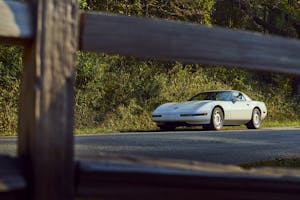
The year 1994 was also the final one for the Volkswagen Corrado in the United States. Like the C4, this wedgy coupe was showing its age by then. The first Corrado appeared for the 1988 model year, but it was riding on the bones of the new-for-1984 VW Golf and Jetta. It, too, had been energized with a new engine, in this case the 178-hp VR6 that replaced a 158-hp supercharged 2.0-liter four. The difference was much bigger on the road than it was on paper. Around the Hocking Hills, the VR6 placed midpack in a 1992 Car and Driver comparison test, an improvement from the almost universal disdain shown its predecessor. It wasn’t enough to keep the car in the American market, and its successor, which returned to the Scirocco name before being discontinued last year, was never brought here. So if you’re interested in a Karmann-built sporting Volkswagen, your choices in this country start in 1956 and end with this car.

When I see Arthur John’s Jaguar XJ6 glide around the corner into our parking lot to complete our test group, I have the sudden—and unpleasant—realization that none of these cars has a direct successor in showrooms. It’s no longer possible to buy a new front-engine Corvette, a new rotary-powered Mazda, a new VW-badged sports coupe, or even a new Jaguar XJ sedan, which was just discontinued in favor of an electric conveyance to be debuted in the future. In many ways, the loss of the Jaguar feels greater than that of the others, in large part because Jaguar itself is no longer the firm it once was.
You may recall the story of how Jaguar was absorbed by British Motor Holdings in 1966 and fell into a 15-year period of design stagnation and quality problems, only to be revitalized by John Egan in 1981. In 1986, the company was once again returned to private hands with just one volume product: the Series III XJ6, which was a gorgeous but ancient car. In 1989, Jaguar was purchased by Ford for a multiple of its 1986 value.
In between those events, the Series III was succeeded by a new XJ6. Known internally as the XJ40, this was a fresh and radical take on the core Jaguar. It looked like a million bucks and took a back seat to no competitor in terms of features or technology. But it was not reliable, and it was also not quite what American buyers wanted. Ford gave the XJ6 significant revisions for the 1995 model year at considerable expense. The X300, the new car’s internal moniker, had retro styling and traded explicitly on customer nostalgia for the Series III; it also had some visible Ford bits and pieces scattered throughout. Twelve years later, Jaguar was sold again, to India’s Tata Group, where it remains today.
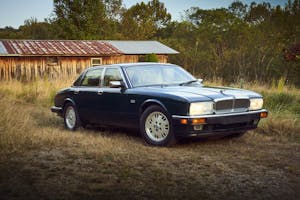
The 1994 XJ6 we’ll drive is, therefore, the last and best-sorted version of the last Jaguar to be designed and built under independent British ownership. I could love it for that alone, but there is so much more here to desire, from the perfectly judged profile to the aristocratic manner in which the big sedan tames Ohio’s winter-ravaged rural roads.
It’s not winter, however; this is a clear and brilliant Midwestern fall day, and just the place for a thorough examination of these four well-preserved examples. We’ve picked a loop around Conkles Hollow that has a sample of everything: long sweepers, blind decreasing-radius turns, and a wild roller-coaster descent through uninhabited forest with a kicker of an asphalt bump that can send a Viper ACR 6 inches into the air for a couple dozen feet at unprintable velocities (don’t ask how I know). We won’t hit those kinds of speeds today, but the Corvette I’m about to drive is more than fast enough for any sane—or slightly insane—back-roads warrior.

Four decades after this car was drawn, it still feels futuristic. The semicircular binnacle in front of me, with a digital speedometer flanked by analog gauges, is a walk-back from the infamous full digital dash of 1984. The seating position is pure race car, made even more uncompromising by the tall frame rails on both sides of the cockpit. Not even a Lotus Elise puts this much bucket into the phrase bucket seat. While the actual chair isn’t that extreme, the positioning screams prototype. The adjustment controls for said chair are split between a flat face on the seat bolster and a space on the center console, perhaps for no reason other than to look cool.
It’s common for the seats on C4 convertibles to tilt slightly toward the vehicle centerline, courtesy of owners who ignore the approved jack points and wind up damaging the seat rails. Eddie Desimpelaere’s car has no such trouble. In fact, it’s more or less indistinguishable from showroom condition, a rare feat given the propensity of the Corvette’s plastic-treated red leather to crack and fade as soon as someone turns on a night light or operates a handheld video game within 500 feet or so. A lift of the super-trick clamshell hood shows a squeaky-clean LT1 V-8 taking up most of the space in the front subframe, which is linked to a similar piece in the back by a long aluminum torque bar.
The LT1’s brute strength had a tendency to flex this minimal frame assembly, particularly in a convertible like this, but that’s more of a problem for the autocrossers who used C4s for National Solo championship than it is on a quick tour of Conkles Hollow. Here the combination of six-speed manual and a 300-hp V-8 simply delivers rapid progress, even by today’s standards. The small-block doesn’t like to rev much; it has a character much closer to that of its immediate predecessors than to the LT1-badged 6.2-liter in seventh-generation Vettes. The natural shift point is at the “4” on the tach, and the top two gears never come into play.
Of all the Corvette generations, surely this was the one least suited to be a convertible. The seriousness of the thing shines through with every slop-free entry into every fast corner. If you could somehow disguise a brand-new C4 well enough and then have a group of current Porsche owners drive it, they’d guess that it was some kind of GT1RS-RS and then offer to pay a hundred grand over sticker just to be first in line. The closest you can get to this level of feedback in a recent sporting proposition is probably the McLaren 675LT, but the Big Mac has a remarkably spacious cargo area; the Corvette convertible’s “trunk” is accessed from inside the passenger compartment and really only works well for people with a Cirque du Soleil level of flexibility. That’s progress for you!
The FD Mazda RX-7, which competed heads-up with this Vette in the market, was also intended to demonstrate progress over its ancient American rival, and in many ways it does. It’s far easier to enter and exit, although once you’re seated, the absence of a tilt wheel is obvious. The interior styling isn’t quite as timeless as that of the exterior—how could it be?—but there’s nothing to criticize in the legible gauge package and its chrome trim rings. Two full-size fellows will be close indeed inside this car, but the payoff is that you strain to reach nothing. The home market had a rear-seat option, but the available space makes a ’70s Mercedes SL look limo-like in comparison.
It rides a little better than the Corvette, although the way it tosses the tail over small bumps would make a modern 911 owner clutch her pearls. There’s zero pretense of idiot-proofing here, as anyone who has helped dig an FD out of a track-day tire barrier can attest. All the glass is close enough to touch, and that, coupled with the subterranean ride height, makes it very easy to read the road.
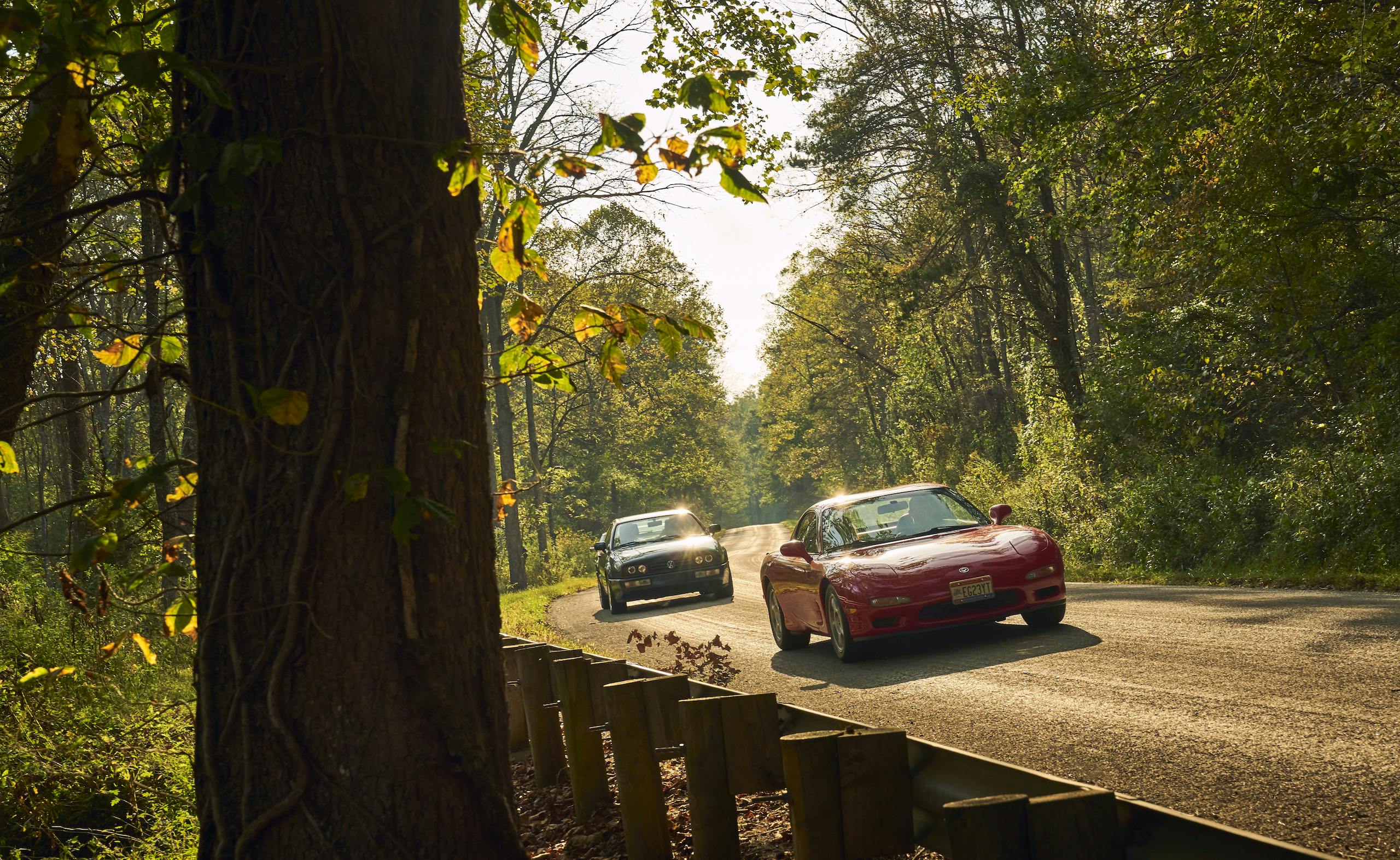
The 1.3-liter 13B-REW rotary makes a timeless case for its existence, nearly matching the Corvette for power at 255 horses, but in a package perhaps half the size. That power is courtesy of twin-turbos that are sequential and blow down a common intake. The smaller snail is spinning by 1000 rpm, and it gives the RX-7 a strong pickup from rest despite the superbly tricky clutch. The second, larger turbo lights the fuse at the 4K mark, and then it’s go-time, all the way to the 8000-rev redline.
Surely Mazda could sell this car in showrooms today. It’s similar to the current Miata in terms of cockpit feel and proportion. The shape itself is timeless. Only the rotary engine would present issues, since it makes about as much power as the 2.0-liter turbo droners in today’s interchangeable entry-luxury sedans, but cannot begin to match them in terms of economy, durability, or environmental consciousness. And you need the rotary to have the low hood, the uncompromising proportions, and the perfect balance.
Doug Yost, the RX-7’s owner, bought this car new from a dealer who was eager to be rid of it. Sticker was close to 34 grand; he paid 27. This was more common than Mazda would have liked at the time. A negotiated increase in the global value of the yen boosted the RX-7, along with its contemporaries from Nissan and Toyota, into direct competition with the Corvette and not really that far away from the Porsche 968. The dealers bore the brunt of this price adjustment, and as a consequence, they were often unenthusiastic about taking new stock.
Ten years ago, Doug tried to sell his car for a song, without much interest. It would be a different story today. As a daily driver, this was a fussy car with some expensive potential maintenance issues. The phrase “bought a keg,” meaning to replace the whole block and rotors, appears frequently on RX-7 discussion boards. Nowadays, the RX-7 is highly sought after by buyers who know it from the Gran Turismo video games and who are prepared to treat it like a classic car. Which it most deservedly is.
Caleb Perry, the young owner of our test Corrado, knows he has a classic as well. The Corrado VR6 has been venerated by the VW faithful since its arrival on our shores, mostly because it was the lightest and purest home for that wicked-sounding 15-degree V-6. It’s so clearly a 1980s Volkswagen when you step inside: stub-by nose, automatic belts, and phone-booth visibility in all directions—except the rear, where a Porsche-esque pop-up rear spoiler ruins the already limited view. Most of all, there’s that glossy black plastic with exposed LED bulbs and the unique scent of VW assembly glue that has been reheated over and over.
The Corrado is at home here in the hills, although a 2008 Civic Si would leave it for dead in no time. It steers, stops, and brakes in forthright fashion, although with that big engine hung over the front axle, there’s never any doubt that the rear grip will outlast what’s available avant-garde. As with the later works of Miles Davis or the novels of Paul Auster, only the true fans will truly love it, which is fine because there are a lot more would-be Corrado owners than there are Corrados.

By contrast, almost anyone could love the Jaguar. The iconoclastic English autowriter L.J.K. Setright, long known to his readers for his Hasidic beard and pedantic love of arcane words, went to his grave insisting that the XJ40 was a purer and better design than the four-headlight X300 that followed. And with the benefit of hindsight, it’s easy to agree with him. There’s not a single bad line on the car, inside or out. The chrome-trimmed door opens and closes with a cultured click, granting entry to a salon with a charming mix of tradition and progress. Even a standard-equipment XJ6 has a full complement of real wood veneer and proper leather, both of which would usually show cracks before the warranty expired.
As with the C4 Corvette, Jaguar took some of the futurism out of the dashboard for later buyers, but there is still a pair of keypads flanking the airbag-equipped steering wheel with its plain-plastic cat face. The infamous “J-gate” shifter is designed for right-hand-drive cars but works well enough once you learn to reach for it. As a former Series III owner, I’m astounded at just how nice the ergonomics are. This XJ40 shows the result of careful thinking everywhere you look. One interesting consequence of the upright windows and considerable interior space is that the driver has quite a sense of being at the corner of the car. Today’s big cars have much more vertical curvature in the side windows and increased door thickness, putting the driver another 4 or 6 inches toward the center. In this respect, the Jaguar feels vintage.
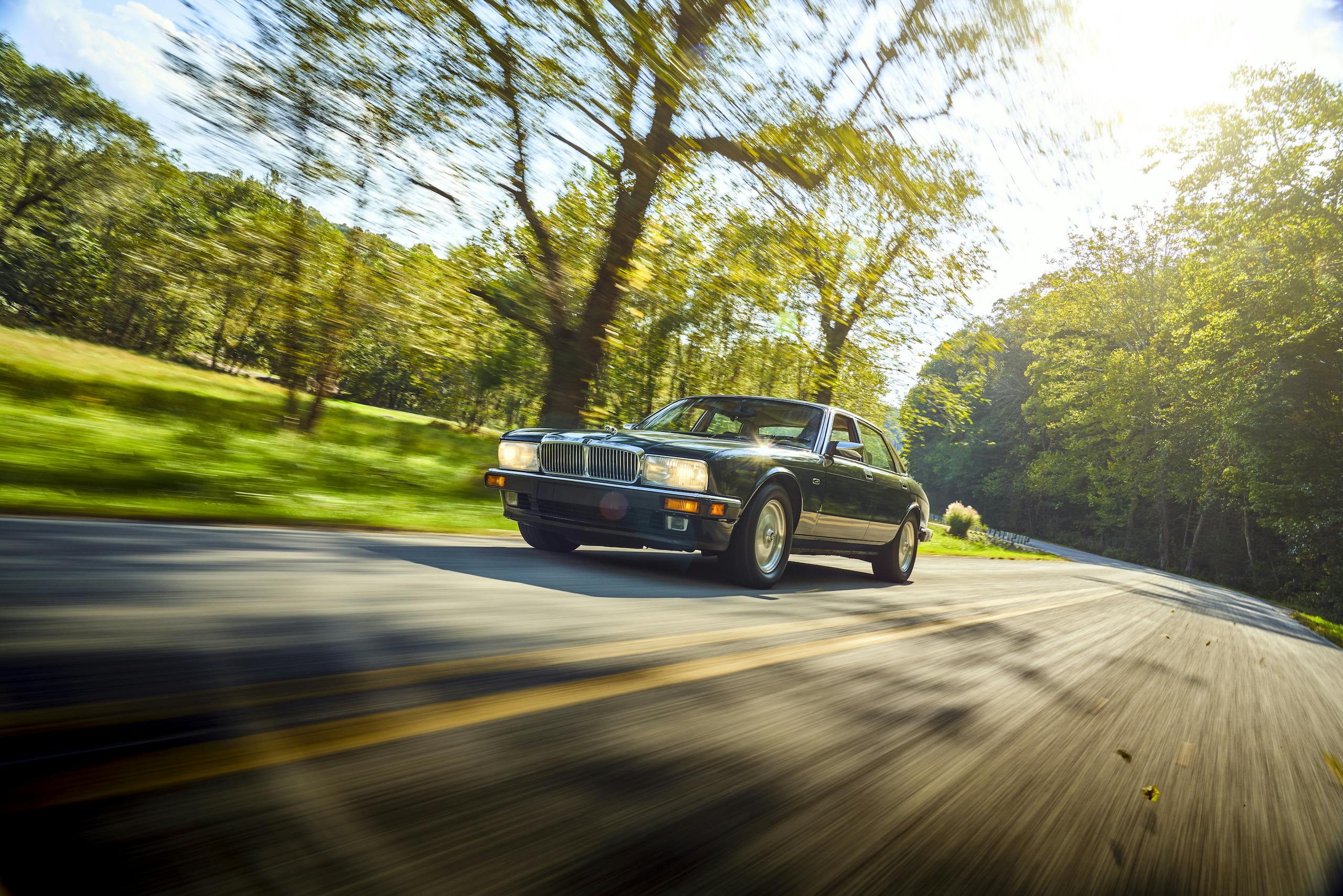
On the move, it’s quite modern; strong, swift, and silent. This 24-valve, 4.0-liter straight-six is an obvious improvement on the old 4.2-liter XK six, and it’s an easy match for the Lexus V-8 with which it competed. The transmission is unhurried, with no hint of the constant-shift compulsion that mars today’s luxury appliances. The combined package is strong enough to get you in trouble, although grip and roadholding are both hilariously good. The RX-7 and Corvette could see it off eventually, but it wouldn’t be an immediate or automatic thing.
It’s thrilling to drive a Jaguar, which owes none of its appeal to externalities. Unlike the Series III that preceded it or the X300 that followed, there’s no attempt here to cash in on the glorious past. Nor is there any tiresome in-your-face reminder of the car’s “British-ness” in the manner of today’s Jags, Astons, and Mini Coopers. This is a British car that was designed under British ownership. Its citizenship comes naturally, not via some foreign investor’s Visa card.

The buyers, of course, were not satisfied with the subtle excellence and inherent character of the XJ40, and neither were Jaguar’s new owners. For the next 15 years, all XJ sedans shamelessly cited the 1968 original, even if that styling clothed an all-aluminum frame and hyper-advanced technology. This same lack of adventurousness on the part of the corporate masters doomed the RX-7 and Corrado, both of which were put to death without a direct successor. Only the Corvette emerged better and stronger from the 1990s, although in retrospect it’s easy to prefer the sharp edges and techno-funk interior of the C4 to the bland bulbousness of its successor.
Any of these four would be an outstanding introduction to car collecting. They are in the chewy center of a Venn diagram between circles of “can still be fixed by a dealer” and “can still be fixed by an owner.” They each have informed and engaged owners’ groups available online. Consider them as tickets to a time without screen time, an era that seems like yesterday to many of us but was, in fact, long ago.
1992 Chevrolet Corvette LT1
Engine V-8, 5665 cc
Power 300 hp @ 5000 rpm
Torque 330 lb-ft @ 4000 rpm
Weight 3300 lb
0–60 mph 5.7 sec
Top speed 163 mph
Price when new $33,600
Hagerty #2 value $16,000–$21,000
1993 Mazda RX-7
Engine Rotary, 1308 cc
Power 255 hp @ 6500 rpm
Torque 217 lb-ft @ 5000 rpm
Weight 2800 lb
0–60 mph 5.3 sec
Top speed 156 mph
Price when new $32,500
Hagerty #2 value $41,000–$51,000
1992 VW Corrado
Engine V-6, 2792 cc
Power 172 hp @ 5800 rpm
Torque 177 lb-ft @ 4200 rpm
Weight 2800 lb
0–60 mph 6.8 sec
Top speed 140 mph
Price when new $21,800
Hagerty #2 value $18,000–$24,000
1994 Jaguar XJ6
Engine I-6, 3980 cc
Power 245 hp @ 4700 rpm
Torque 289 lb-ft @ 4000 rpm
Weight 4000 lb
0–60 mph 9.0 sec
Top speed 131 mph
Price when new $56,300
Hagerty #2 value $11,000–$12,000

